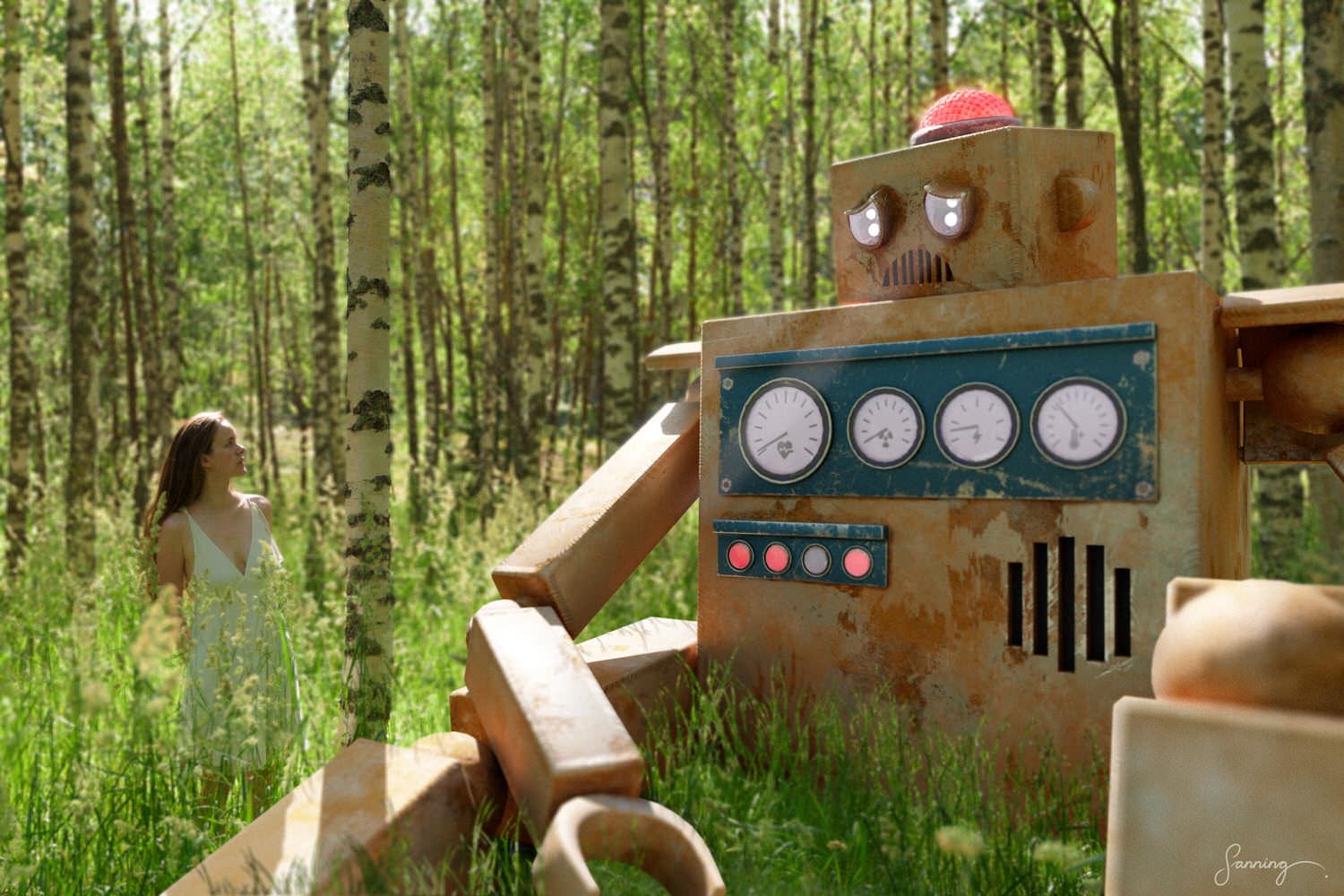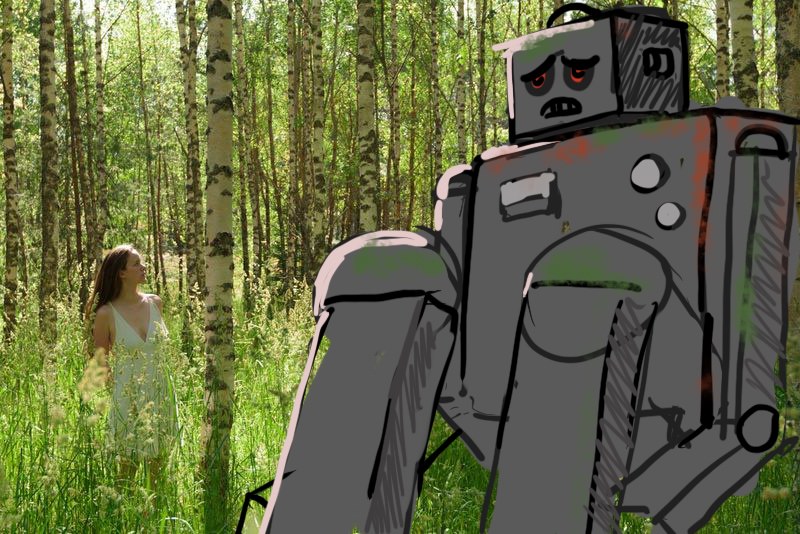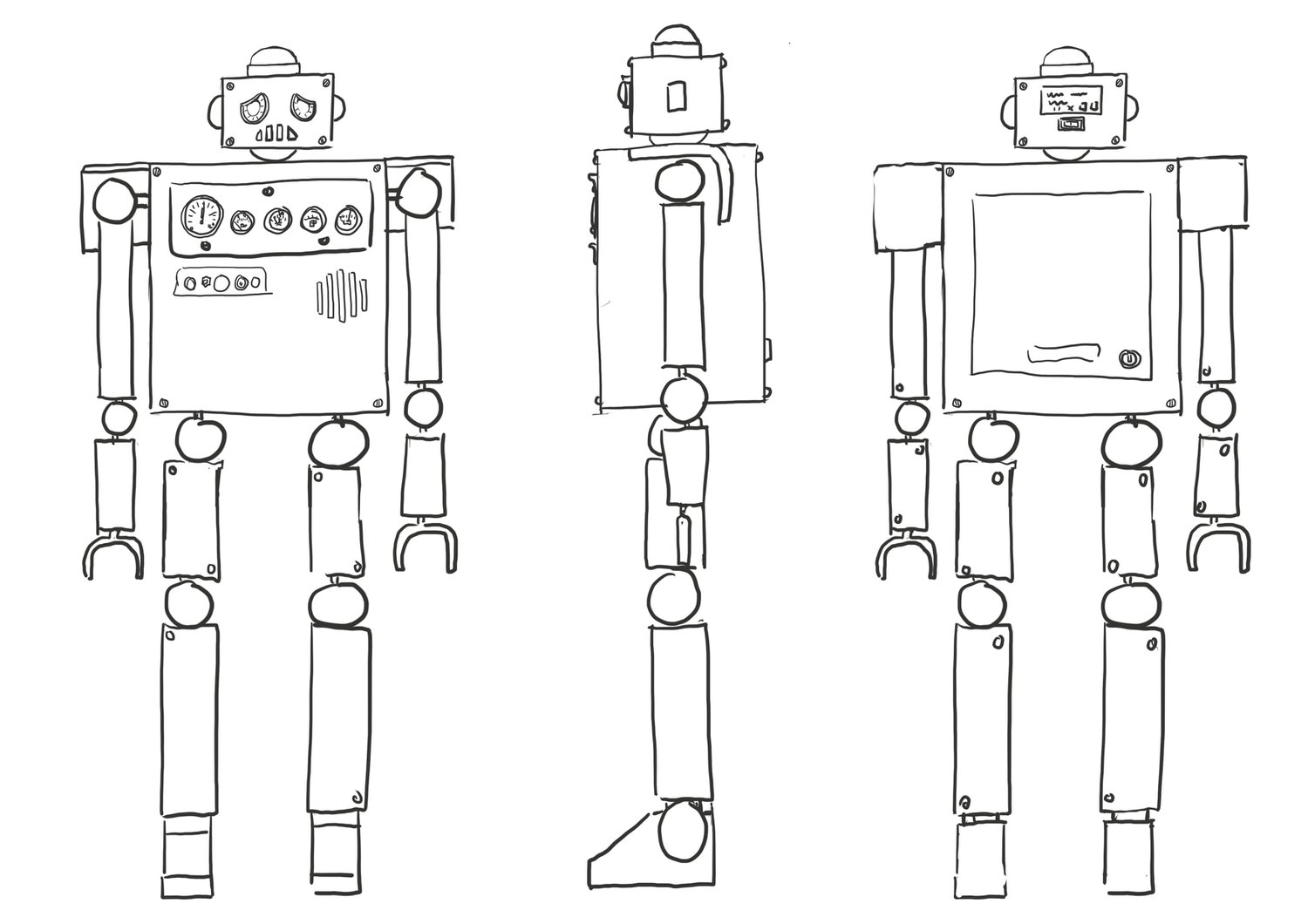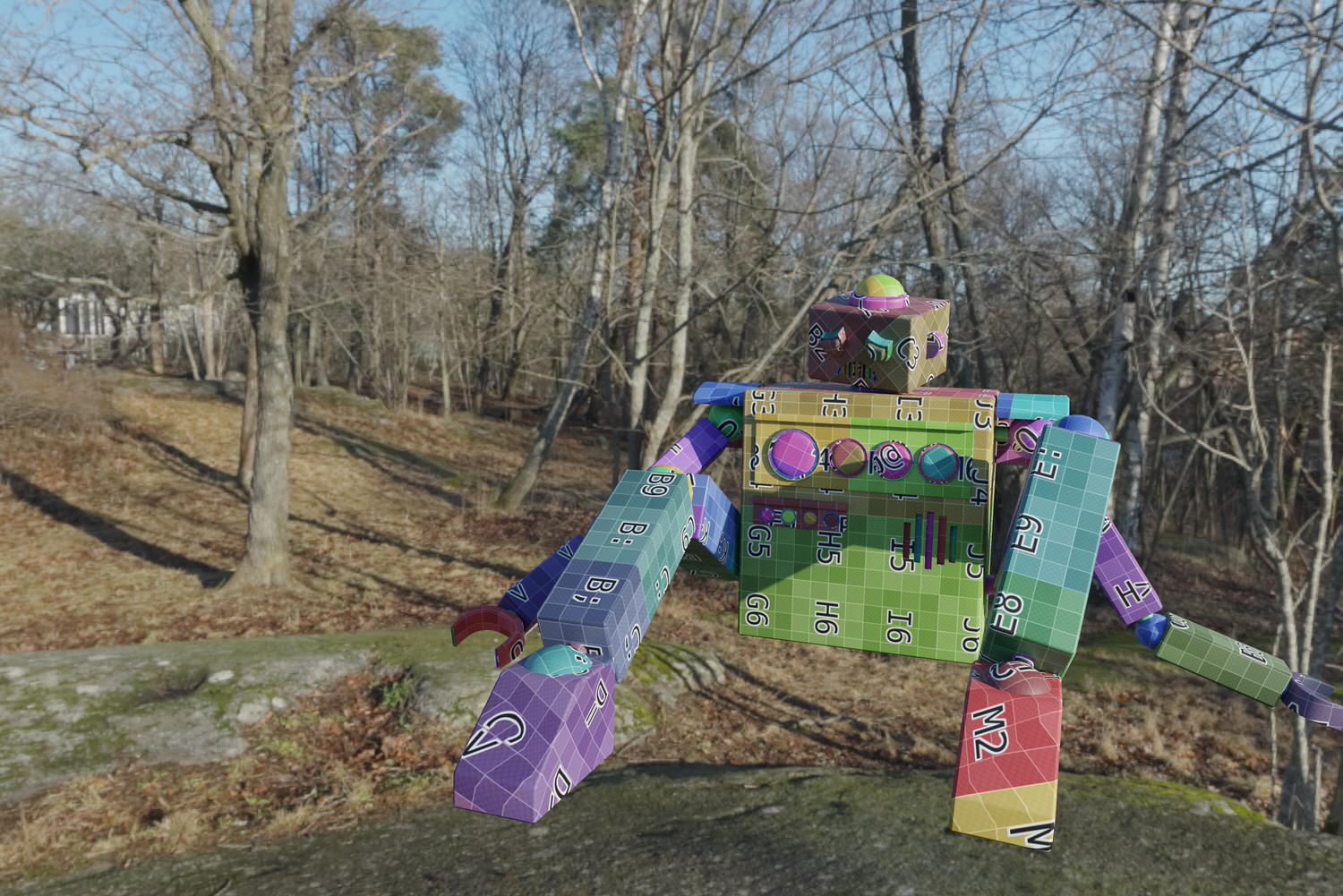"Robot Encounter" is a digital artwork made by Sanning Arkitekter, incorporating the interface between 2D and 3D, embodied in the encounter between fairy and robot. Looking from a country road, we were enchanted by the sparse birch grove, and the lighting which was filtered through the woods. Embraced by the equally sheer and sharp sunlight, we took a photograph of the surroundings, as well as captured an HDRI of the same. Our ambition was then to create a still shot from an occluded narrative, atmospheric and beautiful.
Below follows some images from the process. The digital artwork is for sale in our store, payable with PayPal, although the language in-store is currently limited to Swedish. If Google Translate (for Chrome users) is not successful in its translation, feel free to mail us via info[at]aifosdesign.se, and we'll be happy to help.
On site in the birch grove, we took numerous photographs, thinking of potential scenes from the occluded narrative, not yet knowing which to convey it best. In conjunction with this, we also captured the HDRI which would guarantee that the 3D render of the artwork was lit with the same lighting as the 2D part of the photograph. The produced HDRI is found via the following link: HDRI – Birch Grove (Summer, Late Morning).
Home again, we begin to conceptually sketch a suitable scene. We select a photograph and create the situation we want to convey in the artwork.
Then the character design of the robot is geometrically defined.
Later, different options of materiality are explored.
2D may occlude that which 3D always unveils – if the geometry actually is conceivable in practice. A perspective sketch might hide what does not really fit the intention, but in the modelling process, such omittances become evident. During modelling in Blender, we found that the legs of the robot could not be turned (from the hip) further than 90 degrees if the "hip joints" were placed underneath the torso. But placing them on each side of it solved the problem, allowing for the robot to sit on its rear end in the high grass.
When we were satisfied with the geometry, we textured the 3D model in Substance Painter. We aimed for a rusty look.
In parallel with the continued texturing of the mesh, we rig the character in Blender to a simple skeleton, thus allowing us to pose it with ease. At this stage we still have not produced the HDRI which we aspire to use for the render, and temporarily we use another HDRI. The texture shown above is used to make sure that as few seams as possible are seen from the mesh's UV mapping.
With the character posed and ready, then followed the work of producing the HDRI to light the scene with the same light as was captured during the initial photography. It was a delicate matter to then decide from which view the posed 3D robot should be rendered, so that the 2D photography and the rendered 3D model could be adequately composited in post-production. The insight that the initial photography was taken with a tripod height of 140 centimetres helped us with the Z positioning of the virtual camera in the cartesian XYZ coordinate space, but ultimately the decision of a final angle was mostly artistic, with the original photograph as a background reference.
After the final render, and post-production in GIMP, the digital artwork is completed.
If you would like to return to the overview of our projects, please click here.







